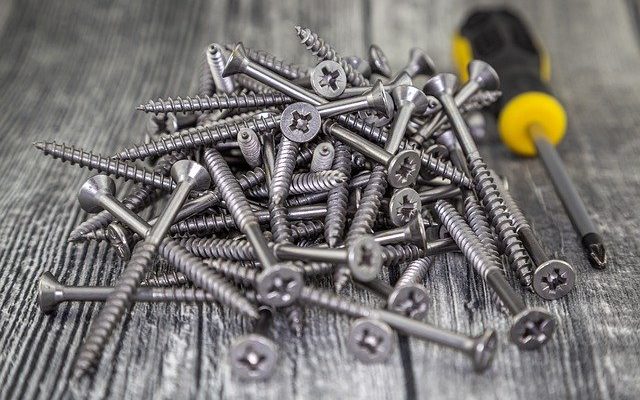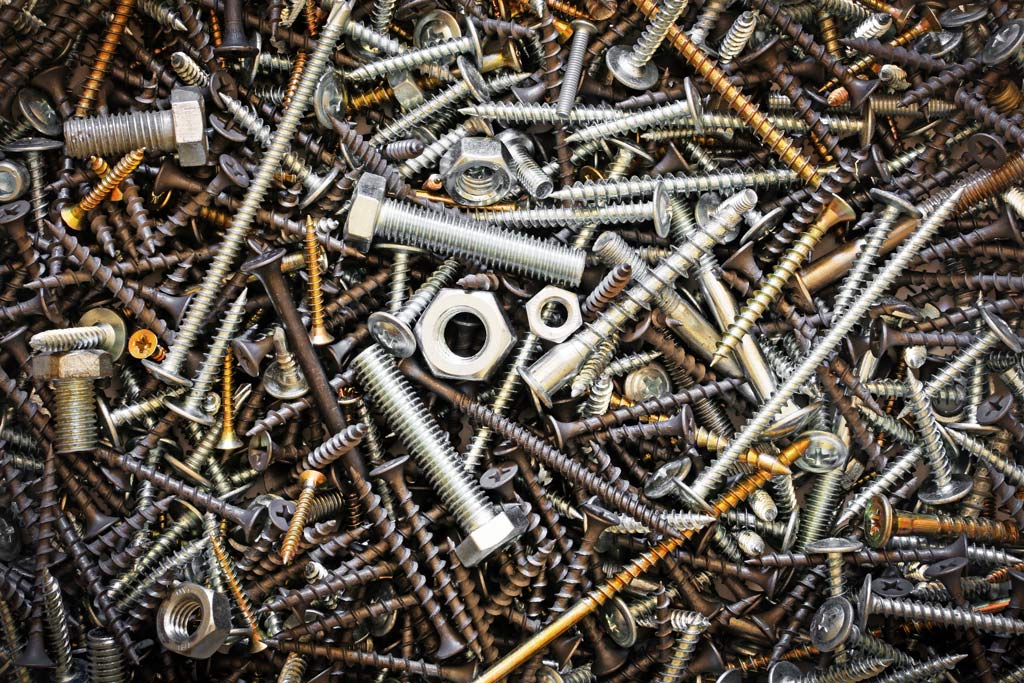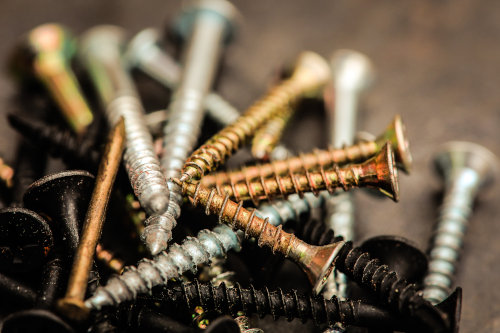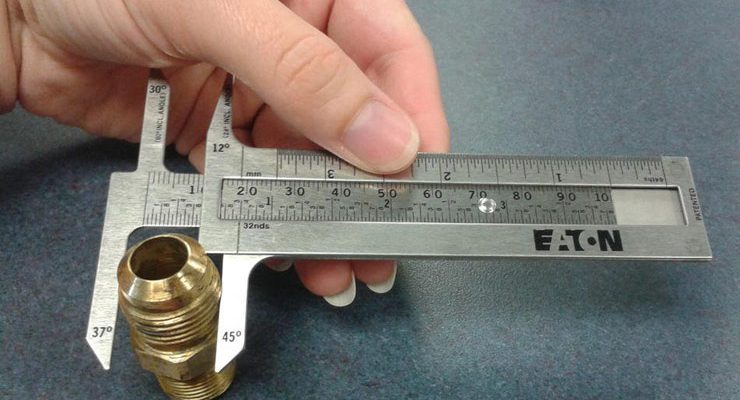
How Manufacturers Produce Plastic Nuts And Bolts
Manufacturers create plastic nuts and bolts via injection molding.
Material Selection and Preparation
Plastic nuts and bolts are often made from a thermoplastic such as polyethylene for good durability, corrosivity, and cost. The material selection process consists of a number of other factors to consider as in mechanical properties, chemical resistance, as well as environmental environment.
Raw Material Craft:
Typically, those materials are requested from the vaccine suppliers who are specialized in providing thermoplastics in their best quality. The materials are often formed in pellets or granules to make the material handling process easier, and to also melt faster in the molding process. To guarantee the well-formed materials in terms of strength, purity. the suppliers have their own quality control in place.
Material Pre-processing:
Drying: Before obtaining any materiel, it will go through the drying process to remove any-moisture. the materel goes to a hopper which as it is connected to a dryer, where the materiel will be dried by the heat and air. Usually, the materiel needs to be level 0.1%-0.2% moisture.
Mixing/Additives: If there are any other additives needed to be mixed with materiel as in colorant, UV, Stabilizer, or reinforced fibers, and they will be load to the other hull, then weighed on top of the materiel, and will go through mixing for uniform distribution of those additives.
Melting/Extrusion: After the meta-material is ready, they are load to extruder, which is completely heated, then measured melted, then pressed to the final form of materiel which is nearly the same shape as the final product from inside an extruder. This stream of materiel with its new shape then is cooled off to be able to pack into pellets.
Crafting: Usually, there are several quality controls to use along the whole process of material preparation, so some examples would be Melt Flow Index for thermoplastic materiel, moisture test for the water amount, the inspection with the naked eye.

When to Use Bolts and Screws
Injection Molding Process
The very first stage of the injection molding process includes the design of molds. Computer-aided design is used by engineers to meticulously create the molds, taking into consideration the size of the plastic materials. As soon as the design is completed, it is printed using high-quality steel or aluminum alloy manufactured by the help of CNC machining.
Material Preparation:
The next step is material preparation, including plasticizing. First of all, plastic pellets, or granules, are chosen to satisfy particular requirements; then, the plastic materials are dried to have a moisture content of 0.1% to 0.2% . Drying matters because otherwise, wet pellets could lead to defects in the final product, as well as might produce considerable cracks in the molded materials.
Injection Molding:
Injection is one of the crucial phases of injection molding, including cycles. In the first stage, the pellets heated by the heater begin melting and reaching a temperature suitable for injection. As soon as the plastic has an appropriate level of viscosity, which is determined by the nature of the product, the liquid melted plastic is injected at high pressure required for fast filling of the die. There are several components of thermal machine actuators, namely the hopper, screw motor, and heater, which includes two contactors of 18kW . In addition, the department has an electronic control box with two contactors of 18kW and a display. The die opening and closing system, which is electro-hydraulic, and the horizontal and vertical motor dissipator device, as well as temperature controller, pressure transducer, and voltmeter, can also serve as thermal machine actuators. The whole process is designed to be in a single or double cycle, taking four seconds for the single and eight seconds for the double.
Cooling with Random Injection: Molding of Pbt Ultem Deflex should be performed under a controlled level of cooling to avoid certain issues. Ejection is followed by the opening of the mold and finally taking the molded product out of the cavity using pins or other mechanisms. Quality control is an integral stage of the process where molds are inspected along with the dimensions and injection parameters of the machine. After all, they are packed in nylon bags for shipping.
Quality Control Measures
Before beginning the production process, manufacturers perform the incoming material inspection to ensure the quality of raw materials that will be used. A sample of plastic pellets or granules is carefully examined for any defects, impurities, or deviations from the supplied specifications . Any non-conforming materials are rejected and are not used in the manufacturing process, eliminating risks of defects in the produced parts.
In-process Monitoring
In-process monitoring is essential in the manufacturing process to ensure high standards of quality. Operators ensure that the parameters used in the process, such as injection pressure, temperature, and cycle time, are consistent. Systems may also be automated, with operators checking their performance and adjusting when necessary . Controllers monitor and optimize the performance of the molding machine throughout the process.
Dimensional Inspection
The ability to ensure the precise dimensions of the parts is crucial for the production of plastic nuts and bolts . Dimensional inspection is used with the help of calipers, micrometers, Go/No-Go gauges, and CMM machines to measure the most critical dimensions of the parts in production, such as thread pitch, diameter, and length . Acceptance of the parts is only granted when they conform with the set requirements.
Visual Inspection
The production process also includes the need for visual inspection to detect any imperfections or surface defects in the produced parts . Inspectors are trained to look for specific defects, such as flash, sink marks, warpage, or discoloration, present on the surface . Parts that do not conform to the requirements are promptly removed from the production line.
Mechanical Testing
The mechanical testing of plastic nuts and bolts is also performed regularly according to the standards of the industry . The testing may include tensile strength, torque, or impact resistance testing. During mechanical testing, samples of the parts in production are subjected to controlled loads or forces, and their performance is analyzed in relation to the set requirements.

Why Don’t all Screws Have
Finishing and Assembly
Finishing processes such as deburring and deflashing are essential for the removal of any excessive material or imperfections from the molded plastic nuts and bolts. They are usually performed with the help of vibratory tumblers, tumbling barrels, or fully automated trimming machines. Surface treatment can include such operations as polishing, buffing, and coating with a protective finish, such as UV-resistant or corrosion-resistant one. Surface treatment also enhances aesthetics and extends the lifespan of the final products. Once finishing processes have been completed, plastic nuts and bolts are either assembled into final products or packed for further transportation.
Assembling Processes:
During the process of assembly, plastic nuts and bolts are combined with additional components or assembled into kits and recorded. Equipment for the assembly can be either fully automated or manual. In both cases, the process is highly accurate and facilitated by the use of special apparatus such as vacuum tools and force gauges. Final assemblies can be performed by mating the nuts and bolts with the parts that will complete the products.
Quality Inspection:
At the final stage of production and before packaging, the assembled nuts and bolts are subjected to quality inspection. Specifically, the assembled parts are checked for proper fit and alignment. Highly qualified inspectors also estimate the level of functionality of the assembled components and verify that all products fulfill the specified requirements. This process also involves the use of functional tests on the fully assembled products. Visual inspections are performed as well in attempt to reveal any appearance defects or non-conformities. Only after it is verified that the products are flawless can they be distributed to clients.
Packaging and Labeling:
Different packaging equipment is used at the final stage of production for packing the nuts and bolts. The operations of the shaping and labeling of parts are also fully automated. Nuts and bolts are usually placed in standard boxes equipped with dividers to restrain parts from mixing during packing. Boxes are fitted with labels stating the part numbers and quantity.

11 Types of Screws-Every DIYerShould Getto Know.jpg
Packaging and Shipping
In factories producing plastic nuts and bolts, package handlers have to follow a detailed packaging process to ensure the safe transportation of the finished products. At the first stage, the nuts and bolts produced are sorted based on size, type, and quantity. A worker picks up carefully this group from the conveyor belt and places them neatly into packaging containers . These containers can be a plain cardboard box, a plastic bag, or a blister pack. Before the details are placed, a protective material may be added to the bottom – for example, some bubble wrap or some foam inserts. Then, another worker places the items horizontally with care, avoiding spilling of plastic nuts and bolts around.
Labeling and Identification
Each small piece of plastic nuts and bolts that have been placed into containers undergoes labeling and identification. A paper label slides down from a printer and contains the following details: part number, batch code, quantity, important information for handling the product . On the side of the card, a small sticker that has a QR code can be placed. Such code allows to be recognized automatically and added to the database of how many items have already been packed and where they are now.
Quality Inspection before Shipping
Before the packages are sent to customers, a final quality inspection is done. All packages are opened, but the nuts and bolts are not taken out and inspected – workers verify packaging integrity. However, they need to take a only quick look at the items on the top row of the box. If some details are deformed, they get back into the box and the whole package is inspected. Workers check that all labels and documents are correct and complete. All packages are closed up and ready for shipping.
Shipping Logistics
The shipping of plastic nuts and bolts is arranged in agreement with the partner logistics company. The companies schedule the arrival and departure of trucks, ships, and airplanes and optimize the best and fastest logistics route. Site loading and in-factory transportation is arranged for the products to be shipped.



